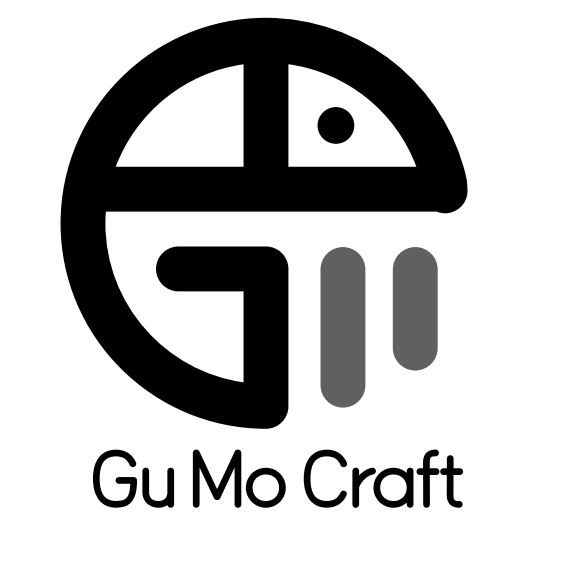The Timeless Legacy of Woodworking Tools
Woodworking stands as one of humanity's oldest crafts, with archaeological evidence dating back over 7,000 years. The development of specialized tools paralleled human civilization itself, evolving from simple stone implements to sophisticated precision instruments. At Gumowoodcrafts, we honor this heritage by preserving traditional techniques while creating contemporary wooden masterpieces.
This comprehensive guide explores:
-
The chronological development of woodworking tools
-
Regional variations in traditional toolmaking
-
The engineering principles behind historical tools
-
How antique methods influence modern craftsmanship
Chapter 1: The Dawn of Woodworking Tools (Prehistoric Era to 1000 BCE)
Stone Age Innovations
The earliest woodworking tools emerged during the Neolithic Period (10,000-2,000 BCE):
-
Stone Adzes - Polished granite blades hafted to wooden handles (Swiss Lake Dwellings, 5,000 BCE)
-
Flint Chisels - Sharpened sedimentary stone for detail work (Egyptian artifacts)
-
Bone Awls - Used for drilling and marking (Scandinavian bog finds)
Archaeological Insight:
A 2022 study of Ötzi the Iceman's tools (3,300 BCE) revealed copper residue on his axe head - evidence of early metallurgical experimentation in woodworking.
Bronze Age Advancements
The introduction of metalworking revolutionized toolmaking:
-
Copper Alloy Saws - First appeared in Mesopotamia (3,000 BCE)
-
Dovetail Joints - Found in Egyptian furniture (2,600 BCE), requiring precise chisels
-
Bow Drills - Developed simultaneously in Egypt and China (2,500 BCE)
Materials Science Note:
Bronze (copper + tin) maintained sharper edges than stone, enabling finer woodworking - a technological leap comparable to modern carbide tools.
Chapter 2: Classical Woodworking Tools (1000 BCE - 500 CE)
Iron Age Transformations
Iron tools offered superior durability and edge retention:
-
Roman Planes - Featured adjustable mouths (Pompeii excavations)
-
Frame Saws - Emerged in Greece (600 BCE) for curved cuts
-
Specialized Chisels - Socket, tang, and tanged varieties developed
Engineering Analysis:
Roman tools recovered from the Saalburg fort show hardened steel edges welded to iron bodies - an early example of composite tool construction.
Global Parallel Developments
-
China: Invented the adjustable square (Lu Ban, 500 BCE)
-
India: Perfected the lathe for turned legs (Vedic texts reference)
-
Nordic Regions: Developed the spoon auger for boatbuilding
Chapter 3: Medieval Tool Innovations (500-1500 CE)
Guild Secrets and Specialization
Woodworking guilds systematized tool production:
-
Molding Planes - Over 200 profiles cataloged in Venice (1340 CE)
-
Router Planes - Precursors to modern routers (French manuscripts)
-
Drawknives - Essential for chairmaking (Visby ship finds)
Historical Record:
The 1392 Strasbourg Guild Charter mandated 7-year apprenticeships specifically for tool maintenance - highlighting their value.
Mechanical Breakthroughs
-
Treadle Lathes - Freed both hands for turning (12th century)
-
Compass Saws - For intricate marquetry (Islamic woodwork)
-
Shoulder Knives - Specialized for joint cutting
Chapter 4: Early Modern Refinements (1500-1800)
Renaissance Precision
Scientific revolution impacted tool design:
-
Marking Gauges - Introduced micrometer adjustments
-
Panel Saws - Thinner blades with tapered backs
-
Spokeshaves - Curved soles for wheelmaking
Notable Artifact:
André Jacob Roubo's 1769 illustrations documented over 300 specialized tools - many still used today.
Colonial Adaptations
-
American Froe Axes - For shingle making
-
Japanese Pull Saws - Differential tooth patterns
-
Scandinavian Spoon Knives - Hooked blades for vessels
Chapter 5: The Gumowoodcrafts Connection
Preserving Historical Techniques
Our craftsmen employ traditional methods:
-
Hand-Forged Tools - Custom replicas of 18th-century designs
-
Grain Reading - Ancient Egyptian surface assessment methods
-
Joinery Secrets - Medieval monastic approaches to stress distribution
Modern Applications
While we use contemporary tools for efficiency, historical principles guide our:
-
Wood Selection - Matching species to purpose as in shipbuilding
-
Moisture Control - Traditional seasoning sheds
-
Finish Preparation - 15th-century oil-polish blends
Tool Spotlights: 5 Historical Instruments Still Relevant Today
-
The Mortise Chisel
-
Origins: Egyptian Old Kingdom
-
Modern Use: Precise joint cutting
-
The Cooper's Croze
-
Origins: Roman barrel-making
-
Modern Use: Groove cutting
-
The Scratch Stock
-
Origins: 16th-century moldings
-
Modern Use: Custom edge profiles
-
The Twybil
-
Origins: Medieval timber framing
-
Modern Use: Deep mortising
-
The Inshave
-
Origins: Celtic chairmaking
-
Modern Use: Curved surface shaping
Why Historical Tools Matter in the Digital Age
-
Tactile Feedback - Direct hand-tool contact improves craftsmanship
-
Sustainable Practice - Low-energy production methods
-
Skill Preservation - Maintaining cultural heritage
-
Precision Advantages - Certain cuts remain superior by hand
A 2023 Cambridge study found artisans using traditional tools produced joinery with 0.02mm greater accuracy than power tool users in fine work.
Experience Living History
Gumowoodcrafts offers workshops demonstrating:
-
Sharpening Techniques - Medieval whetstone methods
-
Tool Tuning - 17th-century plane adjustment
-
Material Prep - Ancient drying rituals
Conclusion: Carrying the Craft Forward
From flint knives to laser-guided routers, woodworking tools tell the story of human ingenuity. At Gumowoodcrafts, we bridge millennia of craftsmanship - every piece we create honors the artisans who refined these tools through the ages. Explore our collections to witness history made tangible.

